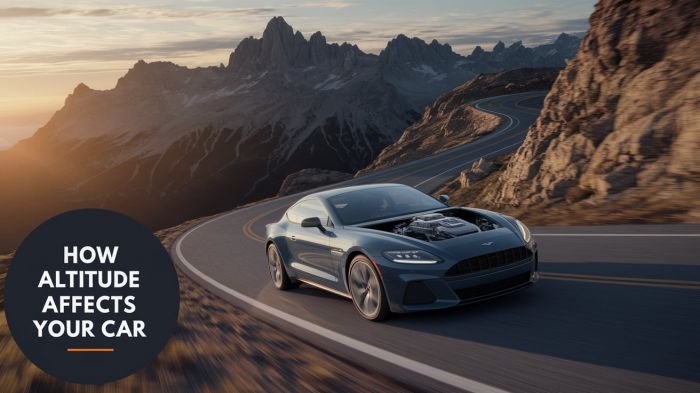Daily driving with a carbureted engine can never be smoother when you start it cold. Imagine hopping on a cool vintage car, and you only have to pump those pedals lightly to fire it. You know it has been running smoothly on the road as any car does. And you do not have to worry about not being able to fire it again if you go for a quick stop at traffic lights, stores, or gas fill.
Hard engine starting highlights
- Level of urgency:Medium
- Can you drive?Yes, if it starts
- DIY inspection:Possible but complicated
- DIY repair:Mostly,impossible
- Price for repair:$200 - $750
- Common Reasons:Spark issues, carb problems, compression, engine problems
- Ways to fix:Inspect spark plugs, check compression, verify fuel supply is good

How a Carbureted Engine Works?
A carbureted engine relies on a vacuum intake system powered by a device that premixes air and fuel in a chamber, called a carburetor, and supplies this air-fuel mixture into the combustion engine. Fuel injection systems have replaced this device for decades now. But many classic vehicles are still up and using this engine type.
A carburetor has two valves at the top and bottom of the engine. The top valve or choke regulates the air that goes into the chamber. When you are cold starting, the choke should close. If you have a hot engine, a bimetallic coil spring aids the choke by expanding and opening the valve.
When the choke closes, the carburetor sucks up more fuel from the fuel pipe and mixes it into the air to produce a combustible mixture. This air-fuel mixture passes down to the chamber's throat, or the narrow kink at the middle called the venturi. The pressure drops and goes down to the throttle valves, producing a sucking effect.
As the throttle or the valve at the bottom opens, it draws more air and fuel from the pipe, generating more power to run the car faster.
But when it refuses to start on a hot engine, you need to find out the cause because it may result in irreparable damage. A lot of causes come with a hard-starting engine when warm.
Vacuum Leak
Vacuum Leaks on a carbureted engine happen likely on the throttle part. In this case, there is a lean mixture formed or insufficient intake vacuum. When more air gets into the carburetor, it produces a lean mixture. The inadequate vacuum reduces the engine efficiency, loss of power, and hard starting. A lot of techs mistake this problem for ignition system issues.
- How to find the vacuum leak?
You can use a carb cleaner or starting fluid to find a vacuum leak. Have a fully-charged fire extinguisher beside you because carb cleaner is flammable.
Spray the carb cleaner in different areas under the throttle body: the area where the manifold and head connect, around the throttle body gasket, valves, and vacuum hoses.
Do this at idle running and observe if there are changes in the idle speed. You would hear a fluctuating idle speed when you spray the part with a vacuum leak.
- How to fix the vacuum leak?
Simply replace the part with a leak: hose, clamp, gasket, or boot.
The choke is not connected to a full 12V source
Some choke operates on electricity. You must connect the coil wire with a 12V ignition source so it opens the throttle.
When everything goes hot, the starter takes most of the power from the battery, leaving the ignition underpowered. You can use a multimeter to check the voltage and see if the coil is getting 12V power.
Fuel Percolation & Vapor Locks
Fuel percolation happens when the engine gets too hot, and the fuel boils into or over the carburetor. And since you are losing more fuel before it goes into the carburetor, you end up cranking and cranking until you get adequate power to start the engine. As it continues to boil, the fuel ends up in a state called vapor lock.
Vapor lock is a state where your liquid form of fuel turns into a gas form while on the fuel lines and before it touches the carburetor.
Fuel percolation is common to carbureted engines because the new fuel formulation has a lower boiling point than older fuels. With ethanol in it, the fuel heats up faster than before.
What should you do if your fuel system undergoes vapor lock?
The first thing you should do is cool your fuel system down. You have to let the vapor condense to a liquid state.
- Park in a shaded area.
- Pop out the hood for ventilation.
- Pour water on fuel lines, fuel pumps, and fuel bowls.
After the system has cooled, get your engine ready.
- Press the accelerator slightly when cranking. This step will help to vent out the vapor left in your fuel system.
- When the engine has started, hold your accelerator until the engine runs smoothly. This step will clear out all the vapor left in your fuel system.
How to avoid or fix fuel percolation and vapor locks?
There are many ways you can minimize the heat coming to your fuel lines and avoid boiling the fuel.
- Add a third return line from your pump to your fuel tank.
This method is an effective way to cool the fuel before going to the carburetor. It also allows the fuel pump to supply gas rather than vapor to the carburetor.
- Wrap your fuel line with a heat wrap.
This method insulates your fuel line from outside heat, stabilizing the temperature in your fuel. Heat shields like this can be fiberglass or aluminized sleeves.
- Place a phenolic spacer under your carburetor mount.
A carburetor spacer provides more intake plenum volume, allowing a better flow of the intake mixture. This distance from the bottom of the manifold to the bottom of the carburetor allows a smooth transition of air and fuel from the carburetor to the intake manifold, improving its flow.
If you don't have the spacer, you can use two 1/32-thick mounting gaskets instead.
- Try a larger fan, a bigger radiator, or a cooler thermostat.
Any of these will improve the cooling system in your engine.
- Top up with ethanol-free fuel.
Ethanol is responsible for lowering the boiling points of the fuel.
- Replace defective water pump.
A lot of heat soak or percolating issues arise with defective water pumps. This issue means the water pump cannot circulate coolant on different parts of the engine. The water pump could have worn out seals or internal failure.
Flooding
Flooding happens when too much fuel goes into the carburetor. The worst scenario is when the rich mixture has flooded the internal combustion engine. This mixture will not ignite, and its explosive limit has been exceeded. During this time, your engine will not start, or if it does, it will stall soon.
The needle, seat, and float regulate the level of fuel that goes to the carburetor.
If the fuel level rises in the fuel bowl, the needle comes closer to the seat.
When the float rises high enough, the needle presses the seat to stop the flow.
If the fuel spills out of the carburetor, the float is not shutting the flow off.
The causes of this problem are the dirt in the fuel bowl or a worn-out float.
To find out if there is flooding in your carb, see if wisps of smoke escape the throat as soon as you shut off your engine. You should also hear oddly fast cranking in your engine. You should also smell fuel around your exhaust.
What to do with flooded fuel in carb?
The problems with a flooding carburetor do not only stop with a hard-starting engine. Fuel may seep through the cylinder and damage the engine bearings.
Also, fuel seeping away from the carburetor may cause flames.
You can crank the engine with the throttle open to permit ventilation and flush the fuel-rich mixture into the exhaust. Only do this when the engine is cold.
In worst-case scenarios, you'd have to replace fouled spark plugs and clean or rebuild your carburetor before starting the engine again.
How to diagnose the hard-starting problem on your carbureted engine when warm?
There are too many causes of hard starting in a carbureted engine when warm. But the common cause is fuel percolation or vapor locks, vacuum leaks, flooding, and improper connections.
Here are the places you should check:
- Check the heat riser valve to see if it is opening.
- Check your fuel lines to see if they are boiling.
- Check the fuel pump to see if it's working.
- See the choke if it is binding or sticking.
- Look for possible leaks, especially on the fuel system.
- Check the float for fuel pressure and the needle and seat for possible dirt and grime.
- Your fuel filters may also have blockages causing low fuel pressure and lean air-fuel mixture.
Our Final Advice
As you can see, most problems do not come from the carburetor itself. Most of them are problems with external systems that work with the carburetor.
Insulate your fuel lines. Insulate your carburetor from the manifold. If your carburetor is flooding, you need to replace it.
Be mindful of possible backfires or accidents when diagnosing. Do not touch anything in your engine when it's hot and running. Be aware of flammable liquids such as fuel and carb cleaners. Remember to keep safe. And remember, you can always fix your hard-starting issues with the right diagnosis.
About the authors
The CarAraC research team is composed of seasoned auto mechanics and automotive industry professionals, including individuals with advanced degrees and certifications in their field. Our team members boast prestigious credentials, reflecting their extensive knowledge and skills. These qualifications include: IMI: Institute of the Motor Industry, ASE-Certified Master Automobile Technicians; Coventry University, Graduate of MA in Automotive Journalism; Politecnico di Torino, Italy, MS Automotive Engineering; Ss. Cyril and Methodius University in Skopje, Mechanical University in Skopje; TOC Automotive College; DHA Suffa University, Department of Mechanical Engineering






Add comment